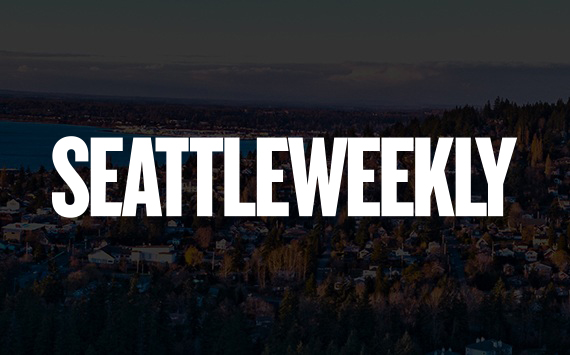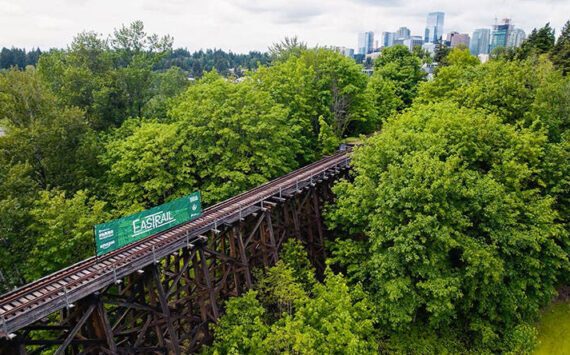Seattle’s slickest drug dealer is getting a little slicker.
As you may have read, Starbucks—whose own nonprofit foundation is dedicated to promoting literacy—has decided to banish alternative newspapers, like Seattle Weekly and The Stranger, from distribution in its stores. Never mind that literally tens of thousands of Starbucks customers pick up the papers each week; never mind that places like Starbucks are where people read, discuss ideas, and plan their next coffee dates. Free papers like ours no longer fit into the company’s plans: We don’t make them a profit the way chocolates or tchotchkes can. And they can’t raise our price the way they can with other products (the latest 7 percent price increase on your morning brew makes your average tall latte about $2.30).
Once upon a time, Starbucks was eager to have us in their coffee shops. As the chain expanded, it was looking for ways to connect itself to new communities, to establish itself as a public meeting place, a village square in the Age of Malls. In 1990, Starbucks agreed to carry our brand new suburban paper, Eastsideweek, in all its new Eastside outlets. It was a way of being part of the community, they said. It was their way of keeping their local stores local, distinct, and treating their customers like grown-ups. We’re not McStarbucks, they insisted.
Back then, they recognized that alternative papers were adding a new dimension to the mainstream media and that they had become a vital part of the local scene. The Weekly, still a paid paper at that time, was also widely available in Starbucks outlets—and usually a welcome presence.
There were a few bumps in the road, however. In August 1994, the Weekly ran a cover story by writer Tim Gower, “Good Cup, Bad Cup: Will Success Spoil Starbucks?” It was an in-depth look at the company’s expansion efforts, and it detailed the resistance the chain was encountering around the country, including cities like San Francisco that passed laws to ban Starbucks from certain neighborhoods. It wasn’t the Starbucks locals were used to. Outside Seattle, people had begun to see Starbucks as a cultural imperialist, staking corporate claim to key retail street corners and ruthlessly driving out local competitors. Starbucks was doing to old-time coffeehouses what Amazon is now doing to independent bookstores. While Seattle was still in love with another homegrown success, Starbucks was behaving like a triple-grande bully away from home.
Some copies of that issue were pulled from Starbucks newsstands by employees. We sent them a bill and they paid it.
It didn’t stop the criticism, though. The warm and fuzzy company that started in the Pike Place Market in the early ’70s, cofounded by Weekly writer/investor Gordon Bowker, had become a national brand, leveraging a sanitized image of bohemian enlightenment, a Seattle hallmark, into a position of almost Microsoftian dominance. Even Schultz saw the parallel. Asked by our reporter back in ’94 if some of his critics just didn’t like winners, Schultz replied, “I don’t know. That’s a good question. Ask Bill Gates.”
It was also around that time that Schultz was enduring some other local PR problems, as questions were raised by Weekly reporter Rick Anderson and others about improvements he made to his home, including a lavish new driveway built on Seattle Parks property. If Starbucks was being a bad neighbor in cities all over America, the company’s leader was accused of being a bad one at home too. Former Weekly publisher Mike Crystal remembers the paper was banned again, briefly, at Starbucks.
To their credit, Starbucks has responded well to some criticism. When Eastsideweek did a cover story in 1996 on the company’s business practices in Central America and accusations they were buying coffee beans picked by exploited workers, the company sent the writer, Mark D. Fefer, a thank-you note for his fairness and accelerated efforts to deal with the problem.
Over the years, Starbucks has shown that they’re responsive to stories in the Weekly, like them or not—which is all you can ask. But knowing that the content is important and provocative, not to mention popular with thousands of customers, isn’t enough to justify continuing to make room for us on their news racks. We’ve been kicked out of scores of places over the years because retailers think we’re too controversial, have too many sex ads, or are geared to godless commie homos. So be it. But increasingly, newspapers, free and paid, are being held hostage to the privatization of public space. Downtown associations, like Seattle’s, police the streets, seeking out and eliminating untidy or inconvenient news boxes; they want downtowns sanitized for your protection. Large malls often impose complete bans or heavy restrictions on newspaper distribution: It’s all part of controlling the retail environment to the last detail and making more profit from every square inch. They want you to believe it’s public space, but in fact it’s owned and controlled by big business interests. Newspapers are too unpredictable, too uncontrollable to be allowed.
In the wake of Starbucks’ decision, Tully’s called to tell us that the Weekly was welcome in all 70 of their local locations. Smart PR move, I thought. We have literally hundreds of other outlets, most of them private, nonchain businesses, who believe in the value our paper brings to their customers and to the community at large. Being in Starbucks isn’t key to our success or theirs. But when companies like Starbucks make a statement of community values, when they assume the pose of taking local culture and customs to heart, when they tell us they value literacy and reading, when they tell us they aren’t McDonald’s, we should listen to their words and judge them by their actions. And act accordingly.








